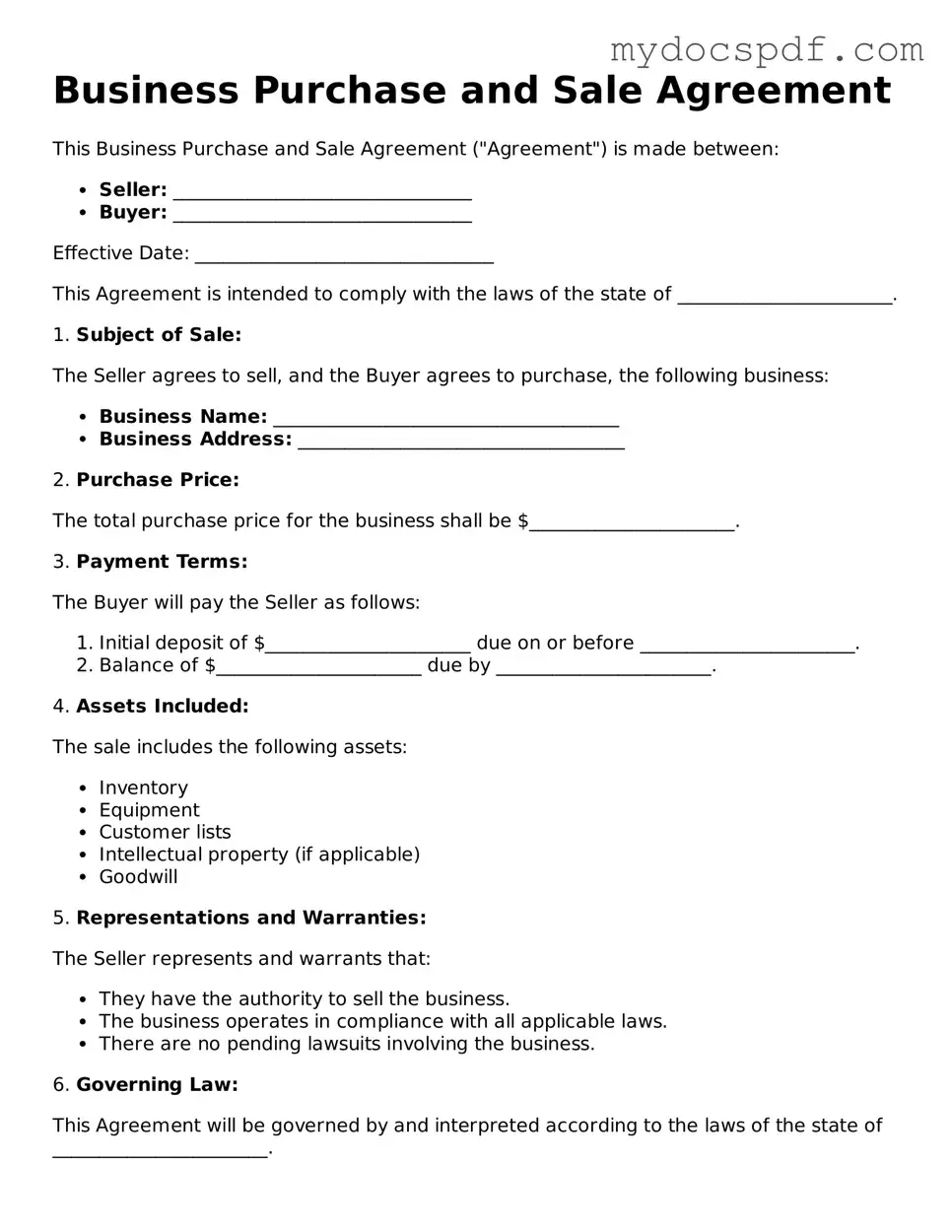Business Purchase and Sale Agreement
This Business Purchase and Sale Agreement ("Agreement") is made between:
- Seller: ________________________________
- Buyer: ________________________________
Effective Date: ________________________________
This Agreement is intended to comply with the laws of the state of _______________________.
1. Subject of Sale:
The Seller agrees to sell, and the Buyer agrees to purchase, the following business:
- Business Name: _____________________________________
- Business Address: ___________________________________
2. Purchase Price:
The total purchase price for the business shall be $______________________.
3. Payment Terms:
The Buyer will pay the Seller as follows:
- Initial deposit of $______________________ due on or before _______________________.
- Balance of $______________________ due by _______________________.
4. Assets Included:
The sale includes the following assets:
- Inventory
- Equipment
- Customer lists
- Intellectual property (if applicable)
- Goodwill
5. Representations and Warranties:
The Seller represents and warrants that:
- They have the authority to sell the business.
- The business operates in compliance with all applicable laws.
- There are no pending lawsuits involving the business.
6. Governing Law:
This Agreement will be governed by and interpreted according to the laws of the state of _______________________.
7. Entire Agreement:
This document represents the entire Agreement between the parties concerning this transaction.
IN WITNESS WHEREOF, the parties have executed this Agreement as of the date first above written.
___________________________ (Seller)
___________________________ (Buyer)
Date: ______________________
